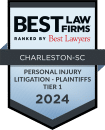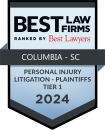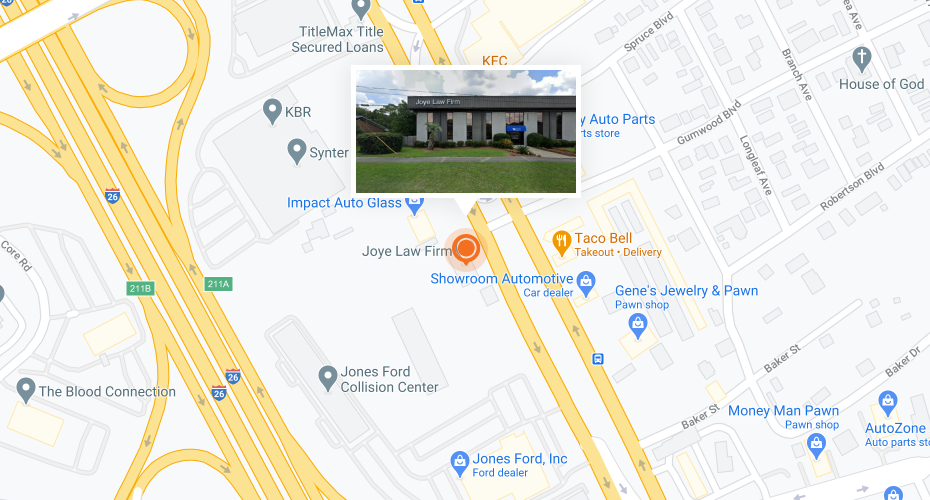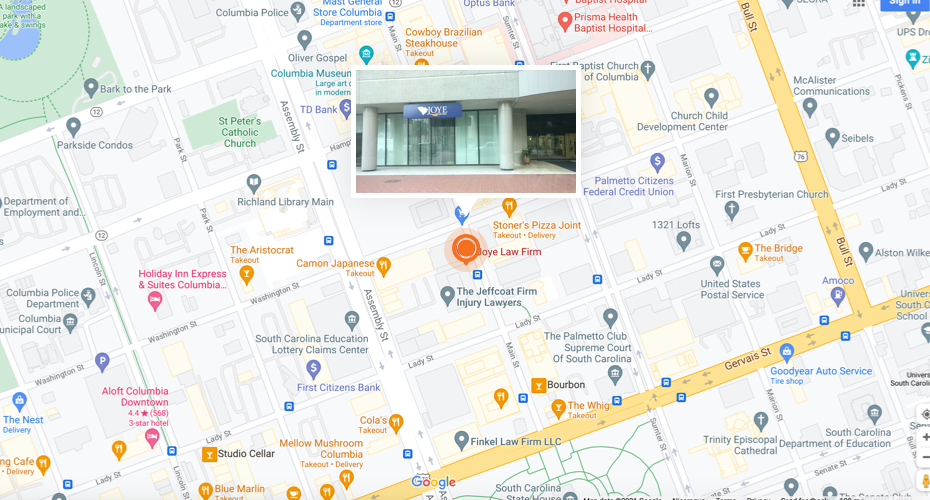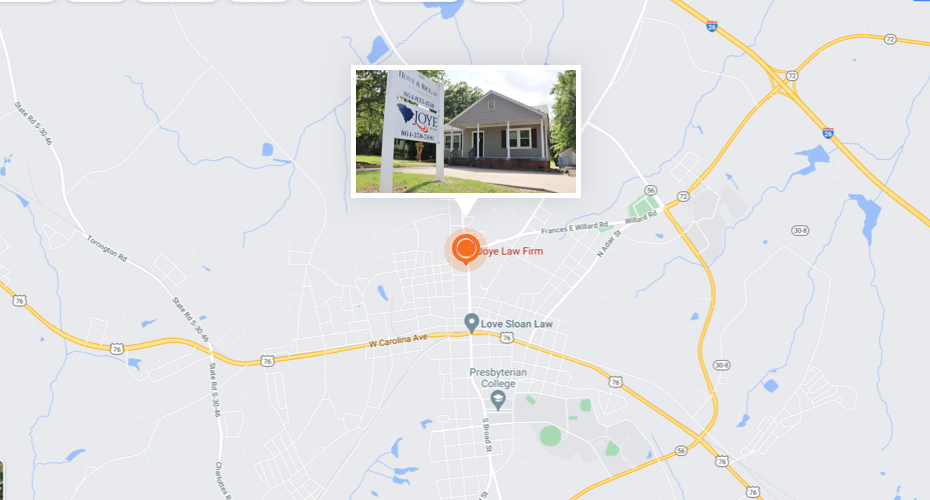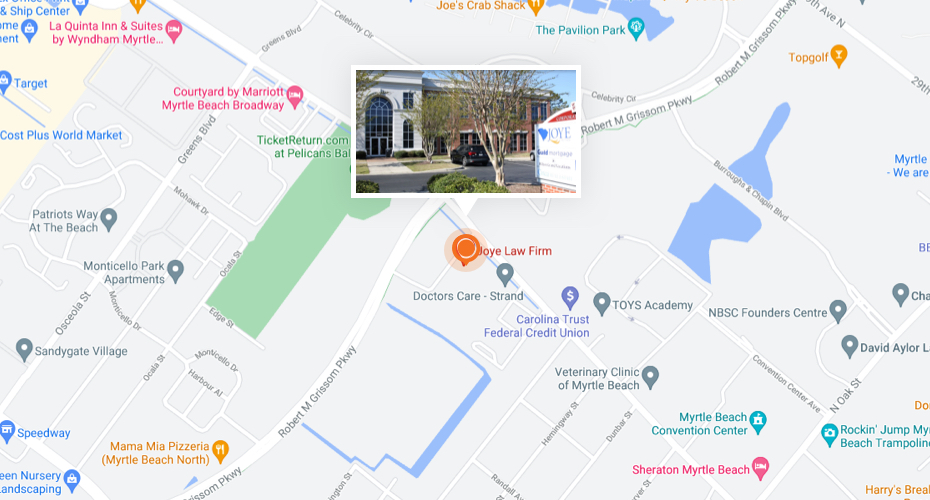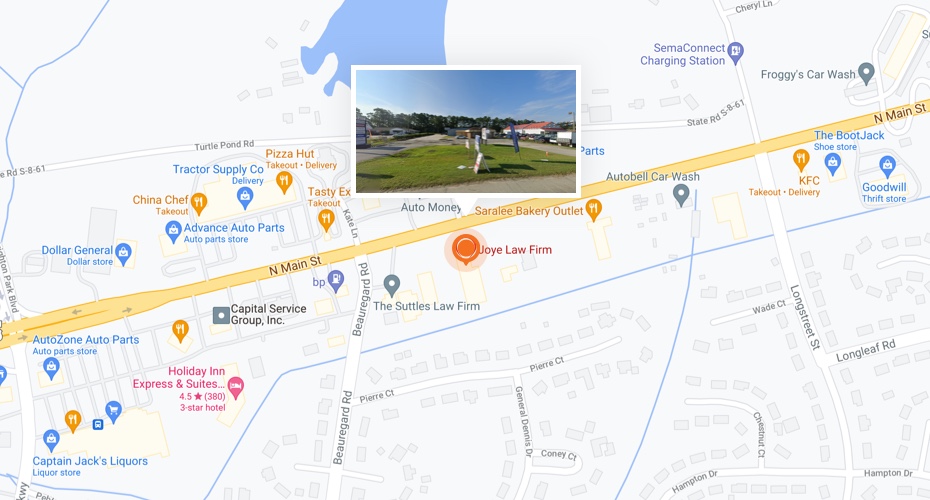
The extent of the injuries a victim suffers from a burn will depend, in large part, on the severity and type of the burn.
Tragically, many serious burn injuries result from accidents caused by someone else’s negligence, carelessness or recklessness.
Our South Carolina burn injury attorneys at Joye Law Firm help burn victims protect their legal right to recover compensation from the responsible party.
Contact Our SC Burn Injury Lawyers Today
Our South Carolina personal injury attorneys at Joye Law Firm can help you through the confusion and strain that follow a burn accident. Respect and compassion are what you will get from our lawyers and staff. Since 1968 we have helped injured people like you recover not just the money and benefits they deserve, but also their lives.
Let us help you, too. Call Joye Law Firm. You can reach us at (888) 324-3100 or fill out an online form for a free case review. Joye Law Firm has offices in Myrtle Beach, Clinton and Charleston, but our burn injury attorneys are ready to handle your case anywhere in South Carolina.
Classification of Burns
Burn injuries are generally classified according to their severity and depth. Traditionally, burns were classified by the apparent severity of the burn injury. The four traditional classifications of burns according to severity are:
- First-degree burns — A first-degree burn affects only the outer layer of skin, known as the epidermis. Skin that has suffered a first-degree burn is typically red and dry, but lacks blister formation. A first-degree burn is usually very painful, but usually heals within three to five days without significant long-term consequences. A mild case of sunburn is an example of a first-degree burn where the injured epithelium peels away from the healthy skin during the healing process.
- Second-degree burns — A second-degree burn can be partial or full thickness and will include the epidermis and part of the dermis, the layer of skin below the surface. In a partial-thickness second-degree burn, some of the dermis is affected, while a full-thickness second-degree burn will destroy all of the dermis. The burn area is typically pink or red and appears wet and/or blistered. It will be very painful, though sensation may be diminished. The wound may blanch when touched. A second-degree burn usually takes a minimum of two to three weeks to heal. Excision and skin grafting may be required.
- Third-degree burns — In a third-degree burn, not only are the epidermis and dermis destroyed, but the underlying muscles, tendons and bones may also be damaged. The burn area may be white or black and will appear charred, dry or leathery. A third-degree burn causes severe damage to nerve endings and permanent tissue damage and scarring. Treatment for a third-degree burn can require several weeks or longer. The victim often requires intravenous (IV) fluids containing electrolytes as well as antibiotics by IV or by mouth to prevent infection. Skin grafting will likely be necessary, as will functional and/or cosmetic surgery.
- Fourth-degree burns — The damage is the most severe in a fourth-degree burn. All layers of skin are completely destroyed in a fourth-degree burn, and muscle, fat, bone and tendons are often affected. Extensive skin grafting and even amputation are common with these injuries, and the victim is usually left with functional impairment.
Along with classifying burns by degree, the American Burn Association has devised a classification system that is used to determine whether a burn patient needs to be referred to a specialized burn unit. Under the American Burn Association system, burns are classified as follows:
Major Burns
- Any burns in infants or the elderly
- Any burns involving the hands, face, feet or perineum
- Burns complicated by fractures or other trauma
- Burns complicated by inhalation injury
- Burns crossing major joints
- Burns extending completely around the circumference of a limb
- Electrical burns
- Full-thickness burns of greater than 10% body surface area in any
- risk group
- Partial-thickness burns more than 20% body surface area in the
- high-risk group
- Partial-thickness burns more than 25% of the body surface area in the low-risk group
Moderate Burns
- Partial-thickness burns of 15 to 25% body surface area in the low-risk group
- Partial-thickness burns of 10-20% body surface area in the higher-risk group
- Full-thickness burns of at least 10% body surface area or less in others
Minor Burns
- Less than 15% body surface area in the low-risk group
- Less than 10% body surface area in the high-risk group
- Full-thickness burns that are less than 2% body surface area in others
For purposes of the American Burn Association classification system, the high-risk group includes anyone under 10 or over 50. The high-risk group also includes anyone with an underlying medical condition such as heart disease, diabetes or lung disease. The low-risk group includes otherwise healthy patients between ages 10 and 50.
Contact Our Charleston Burn Injury Lawyers Today
If you’ve suffered serious burn injuries in a South Carolina accident, you need lawyers you can trust to obtain the money and benefits you deserve. At Joye law Firm, our South Carolina personal injury attorneys have more than 110 years of combined experience helping injured victims after serious accidents.
For a no-cost consultation, call Joye Law Firm at (888) 324-3100 or fill out our online case evaluation form.


